橋影生活新指南-綠藝滲透於建國高架橋下之新提案
Shadows of the Bridge: A New Guide to Life – Green Art Infusing New Rhythms Under Jianguo Elevated Road
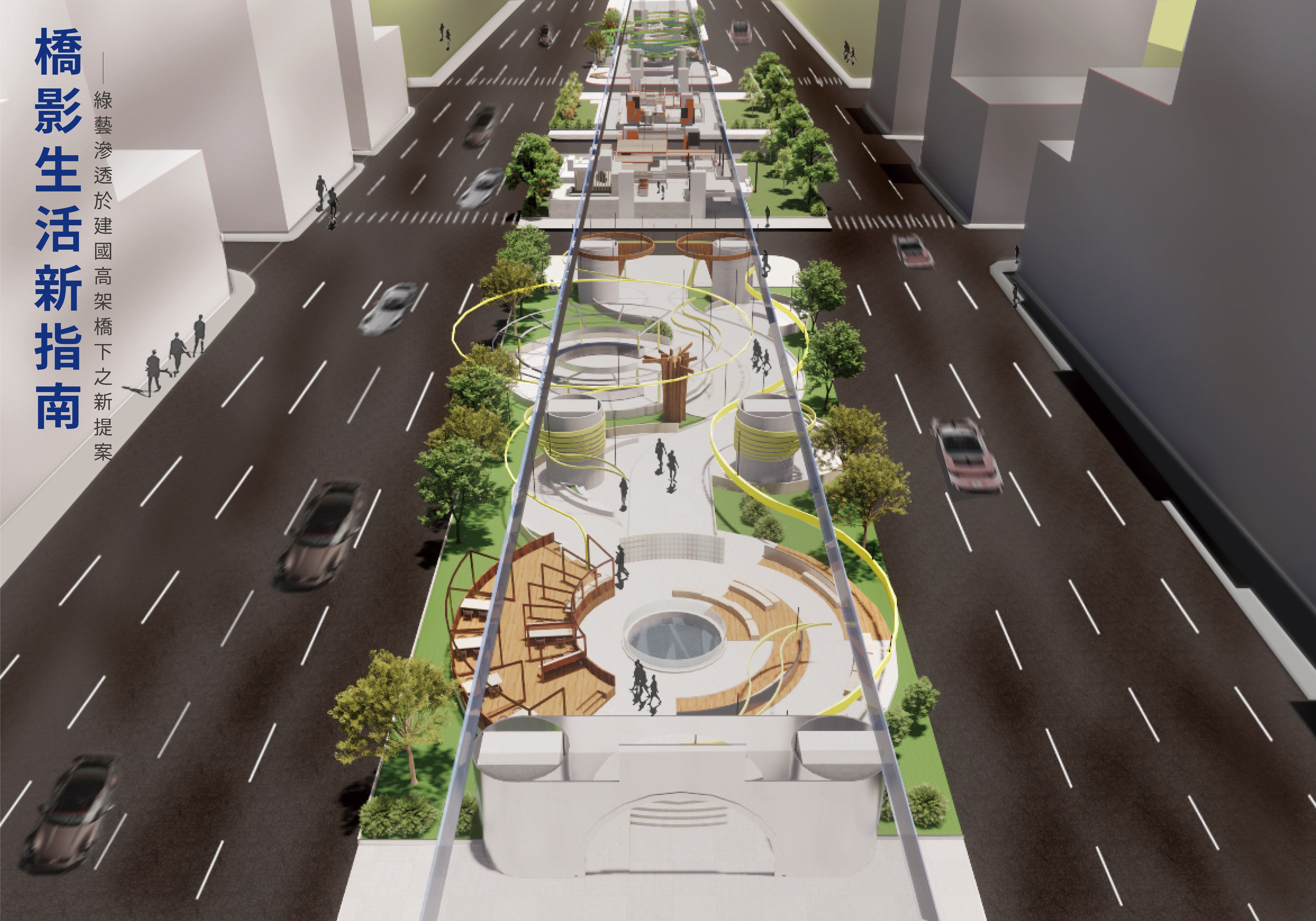
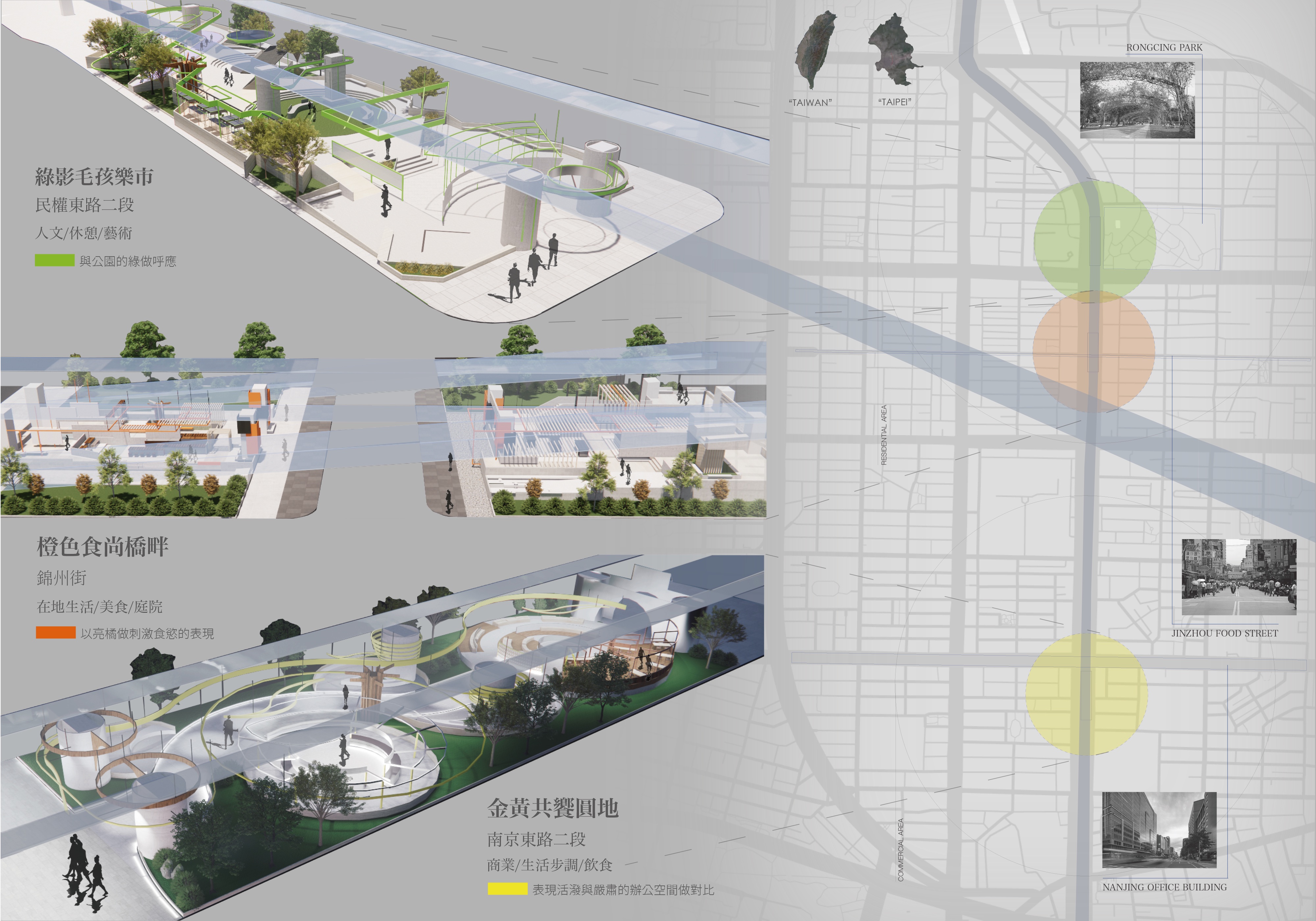
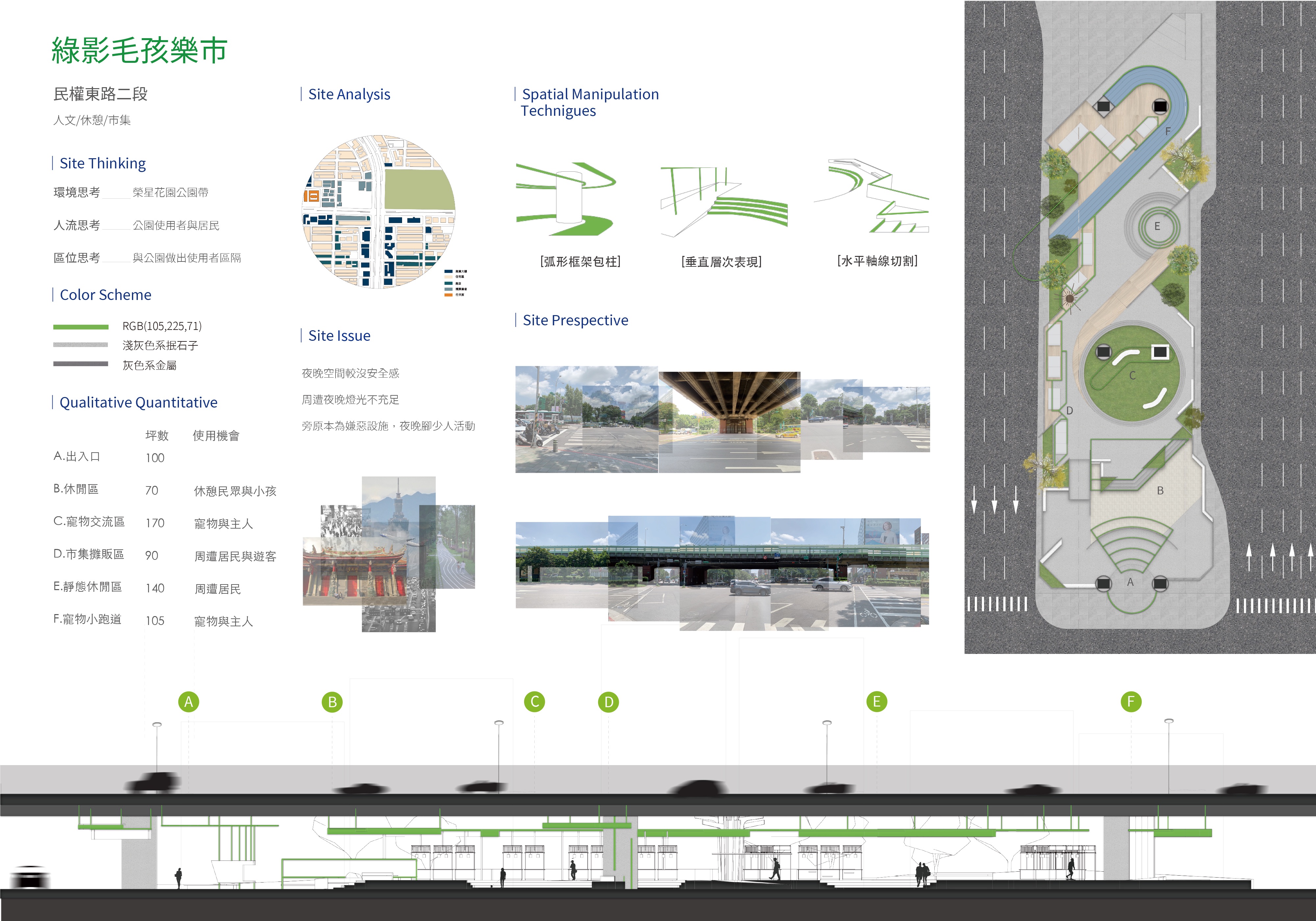
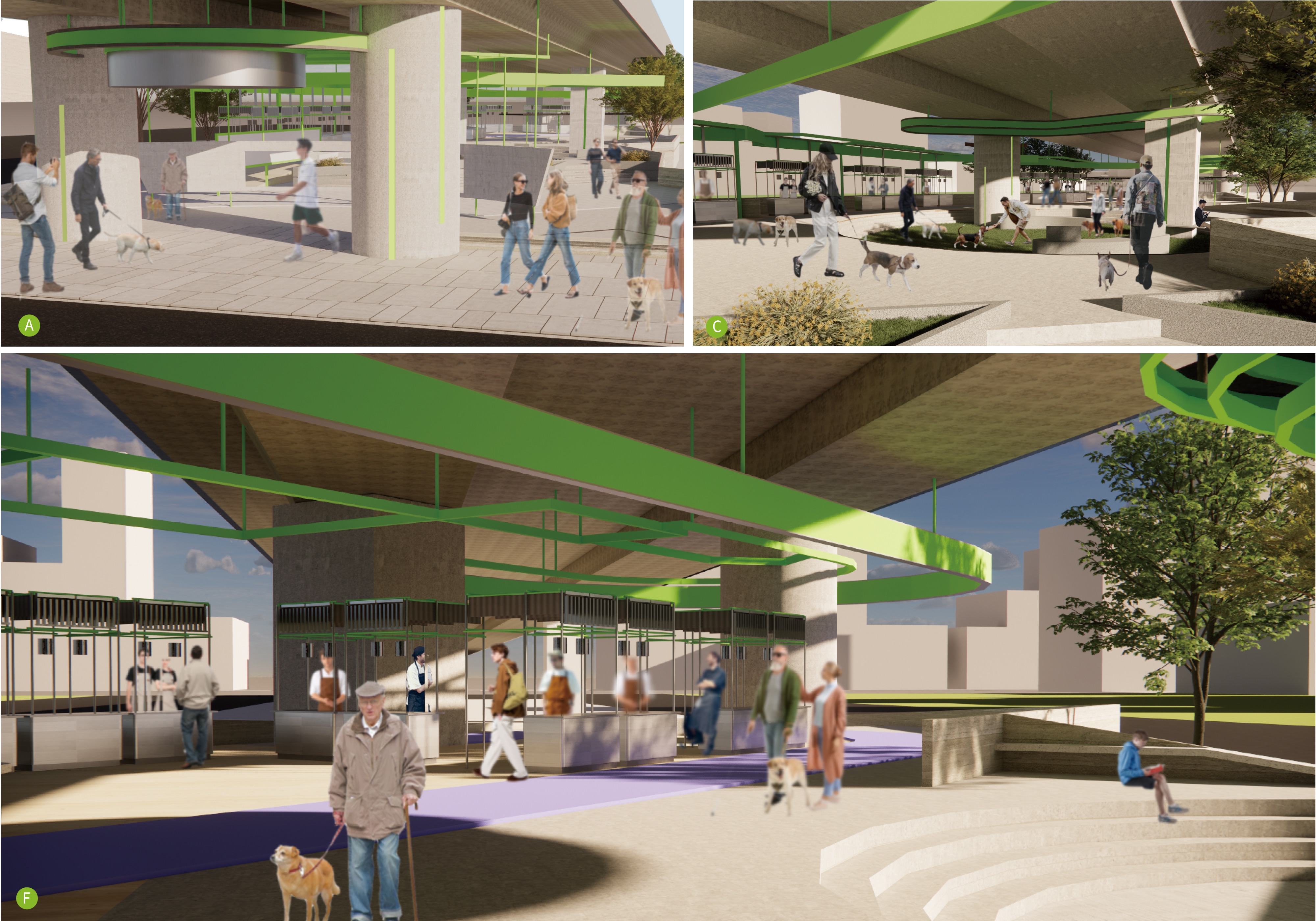
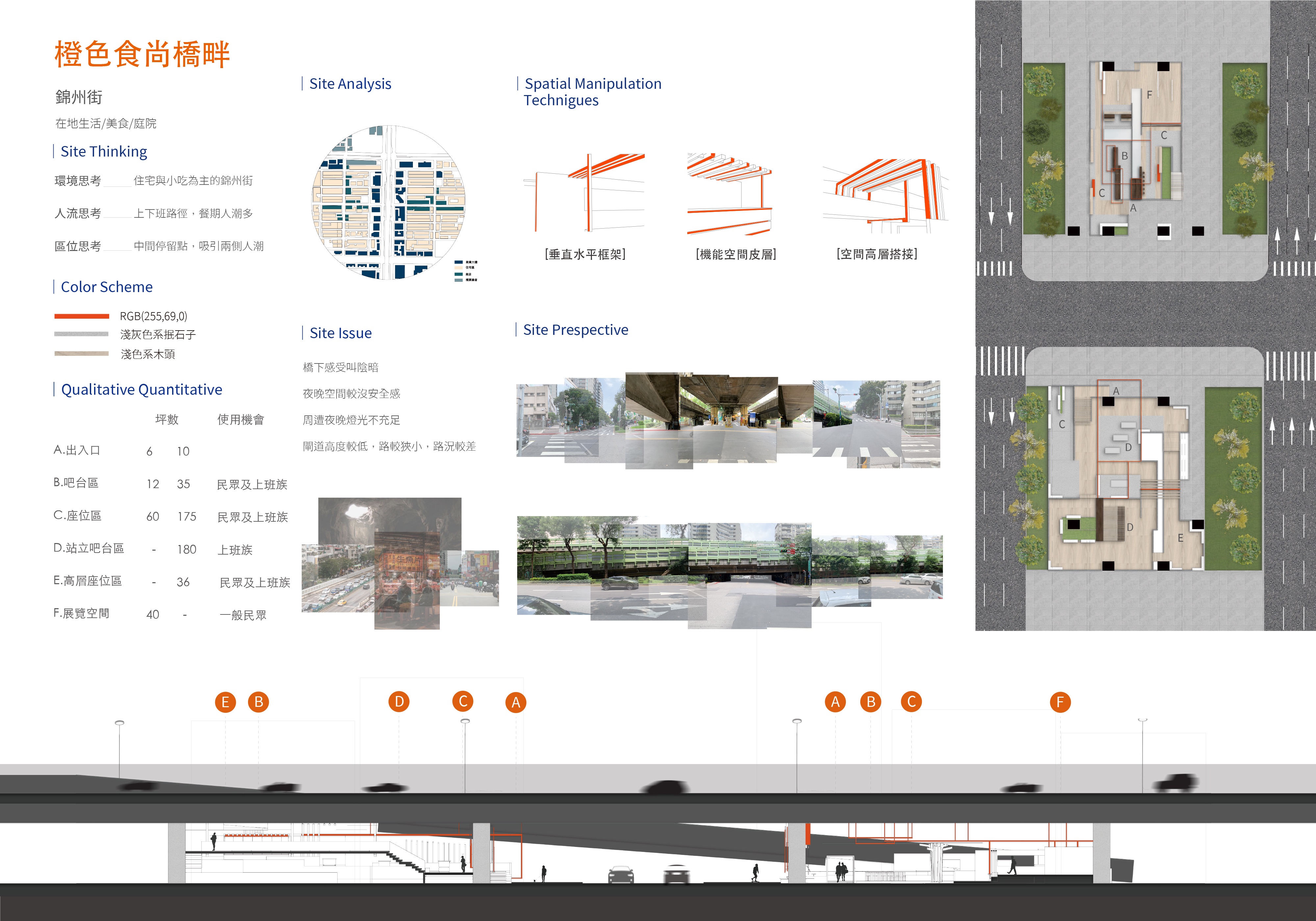
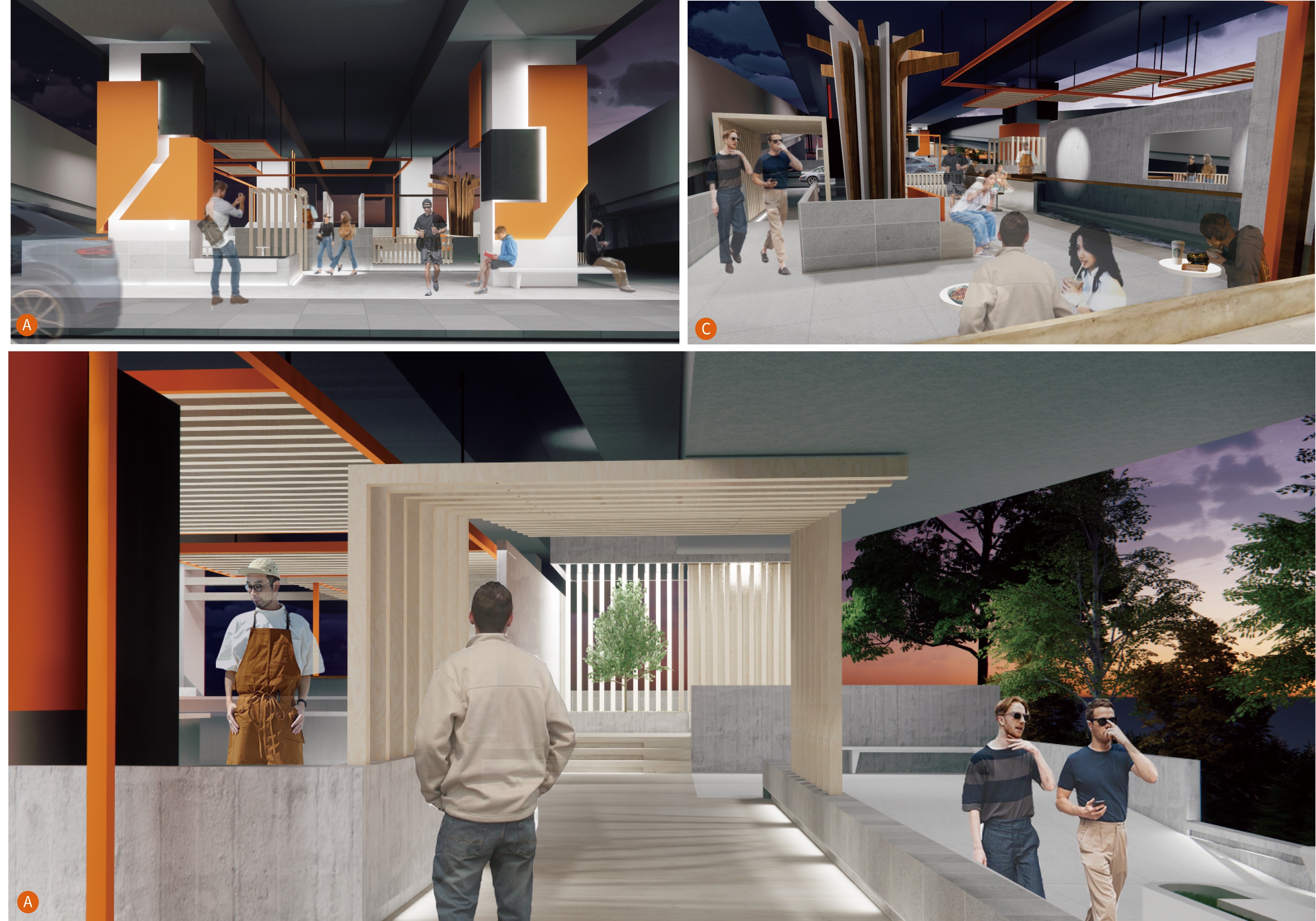
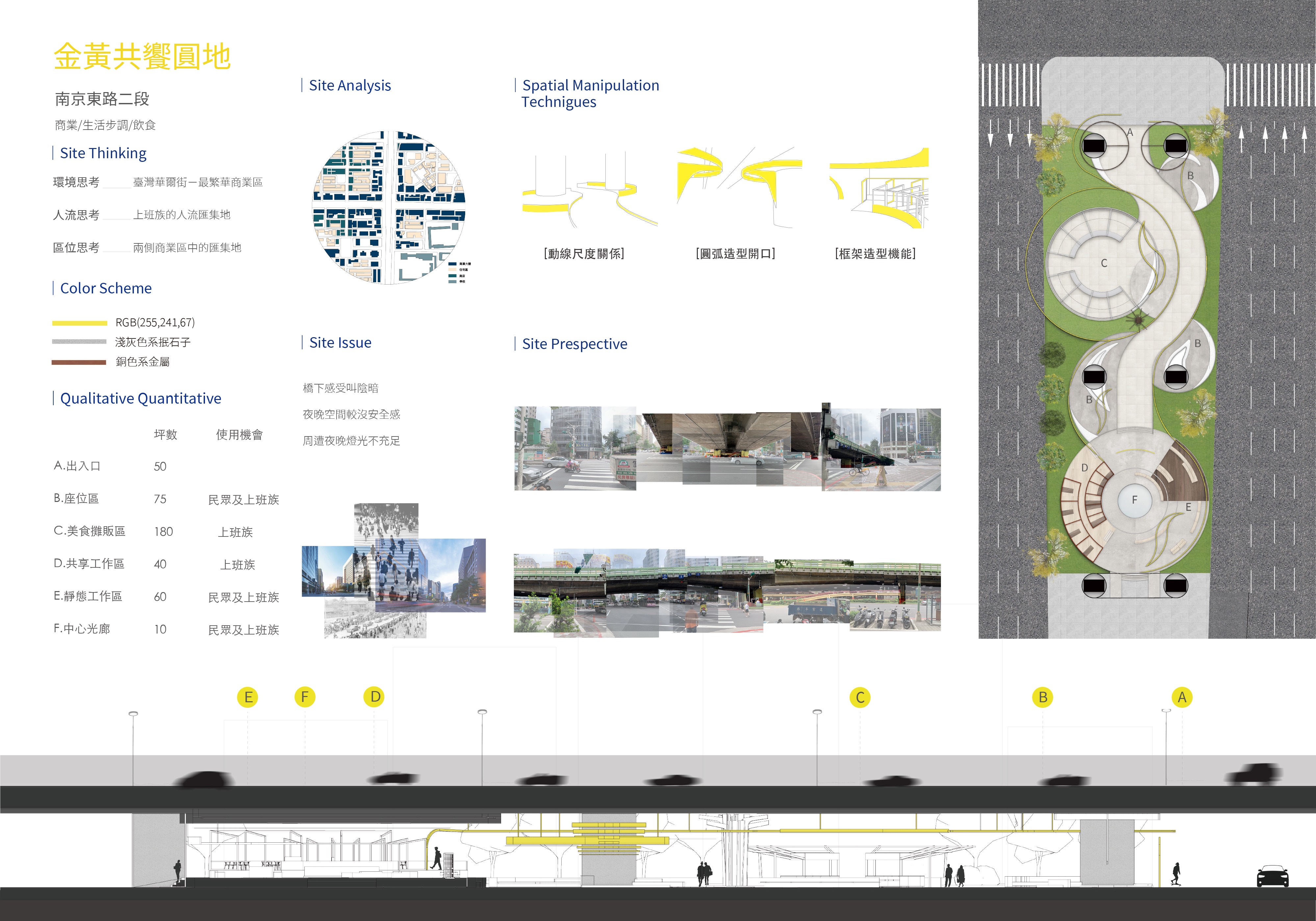
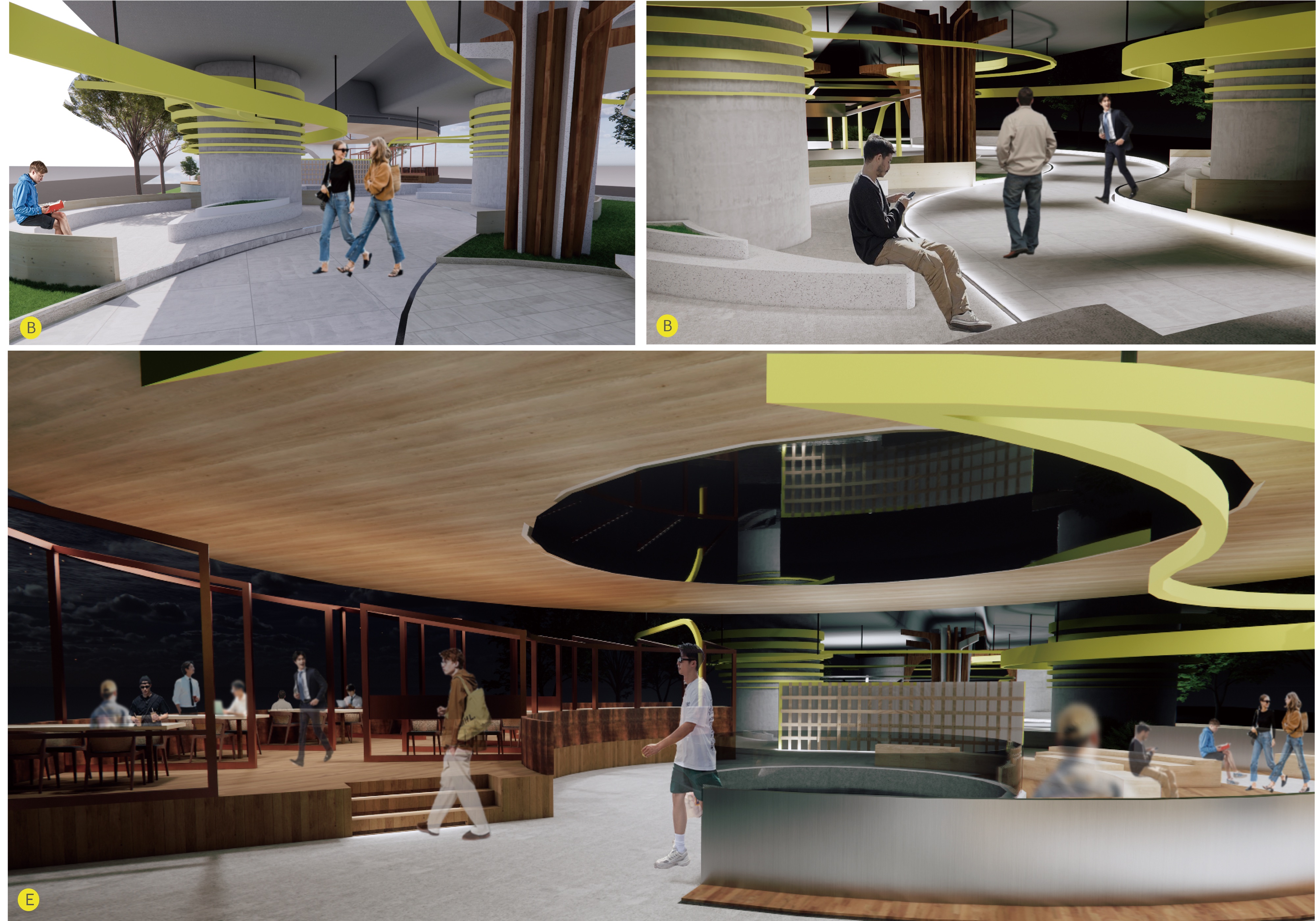
由縱貫台北市由北至南的建國高架橋下為基地,思考橋下機能如何更加活化與改變,提升使用率及都市美化,並回應城市發展與居民日常生活的需求。建國高架橋下擁有豐富的潛力空間,但因過去規劃侷限,部分區域使用率較低,導致橋下空間未能發揮最大價值。因此,我希望透過有系統的設計與規劃,使這些空間成為都市生活中更具意義的場域。
我從觀察周遭生活模式的角度出發,分析不同使用族群的需求,透過三個節點的選擇,回應當地居民與城市行人的多元使用情境。這些節點不僅提供必要的功能,也希望成為吸引人群駐足、交流與休憩的場域。
因此,透過基地周遭的空間感受,形成三種不同的平面構圖方式,並以綠色植物及燈光藝術為貫穿三者的主要概念。運用板及框架的形式,創造靈活的空間層次,使橋下空間在機能與美學上達到平衡。植栽設計不僅能夠改善環境,也可作為自然隔間,引導動線並提升舒適度。此外,燈光藝術則能為空間注入特色,使其更具識別度。
期盼這三個節點能成為台北市未來橋下空間活化的新典範,透過設計的介入,讓橋下空間不再只是通行或停留的地方,而是轉變為多功能且具吸引力的公共場域。希望它們能夠成為周遭居民新的休閒空間,帶動地方發展,創造橋下空間的新律動。
Shadows of the Bridge: A New Guide to Life – Green Art Infusing New Rhythms Under Jianguo Elevated Road
Using the space beneath the Jianguo Elevated Highway, which runs from north to south through Taipei, as the site, I aim to explore how its functionality can be further revitalized and transformed to enhance usage and urban aesthetics while responding to the city's development and the daily needs of its residents. The area beneath Jianguo Elevated Highway possesses great spatial potential, yet due to past planning limitations, certain sections remain underutilized, preventing these spaces from reaching their full value. Therefore, I hope to introduce a systematic design and planning approach to turn these spaces into meaningful urban environments.
Starting from an observation of local living patterns, I analyze the needs of different user groups and identify three key nodes that address the diverse usage scenarios of local residents and city pedestrians. These nodes not only provide essential functions but also serve as inviting spaces for gathering, interaction, and relaxation.
Thus, by considering the spatial perception of the surrounding environment, I have developed three distinct spatial compositions, with greenery and artistic elements as the central concepts connecting them. By employing panels and frames, I create flexible spatial layers that strike a balance between functionality and aesthetics. The integration of greenery not only improves the environment but also acts as natural partitions, guiding movement and enhancing comfort. Additionally, artistic installations infuse cultural identity into the space, making it more recognizable and engaging.
I hope these three nodes will serve as a new model for the revitalization of underpass spaces in Taipei, demonstrating how design interventions can transform bridge underpasses from mere transit or idle spaces into multifunctional and appealing public realms. By doing so, they can become new leisure spaces for local residents, stimulate community development, and create a fresh rhythm for the underpass environment.
崑山科技大學 空間設計系
(四年級) 指導老師 沈豪慶
蕭紋娉